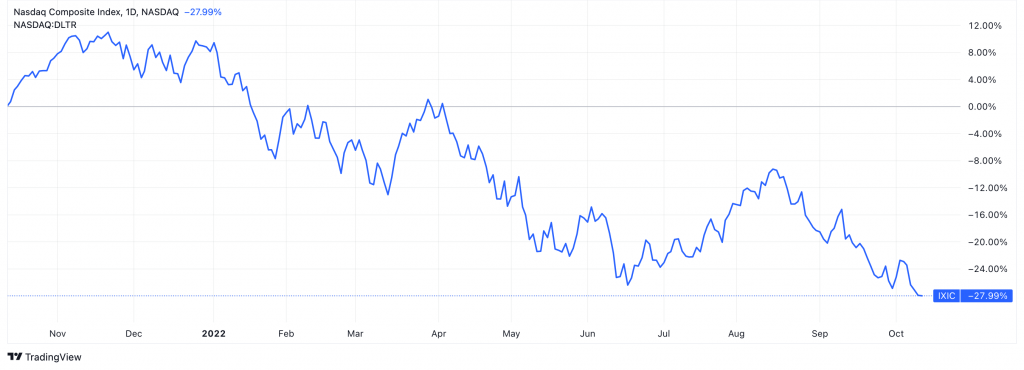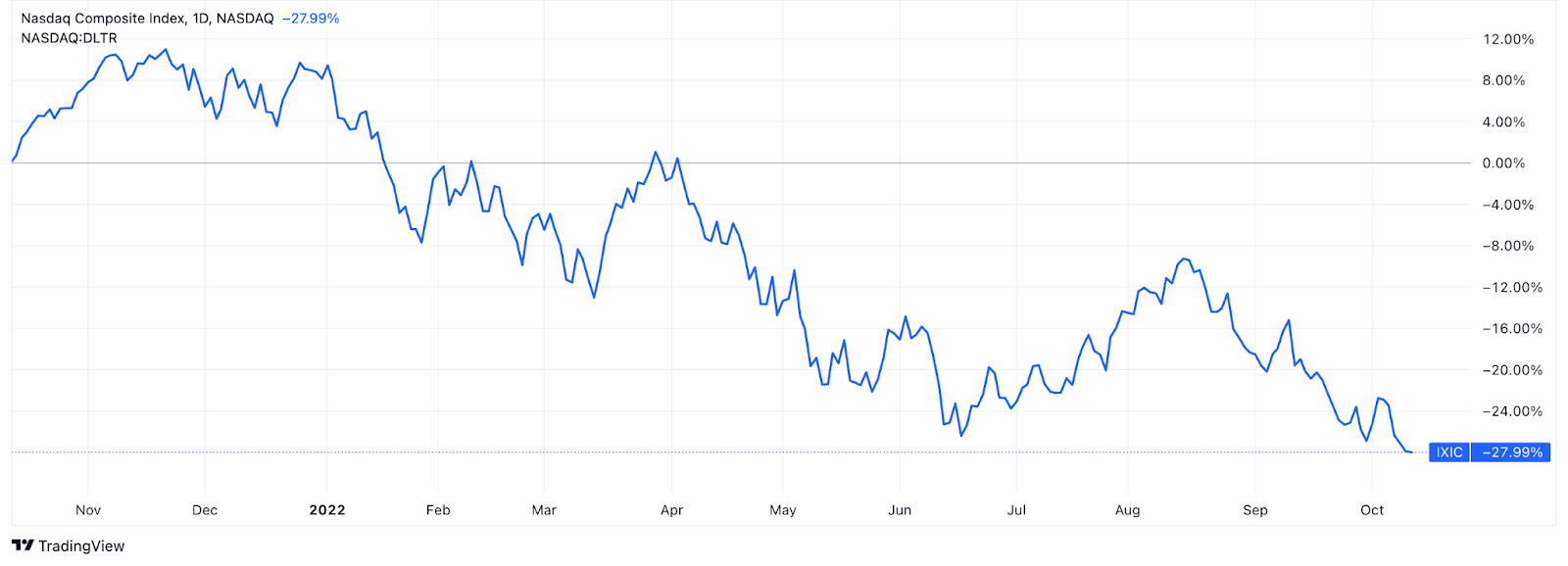Sometimes, fixed prices IRL might turn into rising prices in the stock market. That’s essentially what Dollar Tree does, running a chain of discount variety stores across the USA and Canada. Listed on the Nasdaq Composite, the discount store fares much better in the current environment than the aforementioned index, so let’s try to find out why the Nasdaq is coming up short and what to expect from Dollar Tree in the long run.
Over the last year or so, the Nasdaq has been following global markets into bear territory, down over 33% for 2022 – so far.

We can see on the chart that the index closed 2021 with upward momentum and flashed bullish signals at the start of 2022 as the effects of Covid-19 came to an end. Lockdowns were lifted, air travel was resuming its natural course, mask mandates were dropped, goods delivery was back on track, cafes and restaurants opened – there was very little sign of trouble ahead.
But alas, that momentum wasn’t due to last. We woke up one day to news of a military conflict between Russia and Ukraine. In case you were wondering how to blight hope for a brighter future, we’ve got the answer – an energy crisis that impacts the entire globe, at a time when supply chains had only just begun to find their feet again. That’s how.
Consequently, inflation accelerated at unprecedented rates. The US saw its interest rate hit a 40-year high of 8.6% and the Fed began steadily (but not so slowly) hiking interest rates to cope with the acceleration – and every one of those hikes hits the market where it hurts.
However, things could have been worse. Many experts believe US indices were overvalued even before Covid hit, and that many still are today despite the bearish mood.
Under such conditions, Dollar Tree stock begins to stand out from the crowd, showing growth of about 40% in the last year.
On the following chart, you can see the difference more clearly. Dollar Tree outperforms the Nasdaq by more than 65%.
One of the possible reasons for such an impressive increase is inflation. Yep, it can be beneficial to some business operations. Fixed prices are friends to people who try to spend less money on goods facing high demand. Moreover, more and more people were visiting discount stores (even those former Whole Foods die-hards) as macro conditions necessitated stricter budgets.
So, Dollar Tree makes the most of the spotlight, developing its businesses and increasing its store count. Added to that, we’ve got the holiday rush looming, prompting the brand to hire even more employees to satisfy demand. There is also the end-of-year gift from the stock market – the Santa Claus rally.
But inflation is far more of a foe than a friend, sending operating expenses soaring and therefore making fixed prices far less fixed and Dollar Tree ups the price of most of its $1 items to $1.25.
Soon after, Dollar Tree decreased its earnings per share forecast, and analysts piled in to give their opinion on the stock being overvalued.
In general, experts around the world think that Dollar Tree will show positive dynamics in the 12-month term, with the average target price being about 20% higher than its current actual price. But as you can see, both the pros and cons of these stocks consist of multiple pages, so make sure to always do your own research before deciding to buy, sell or hold your asset.
